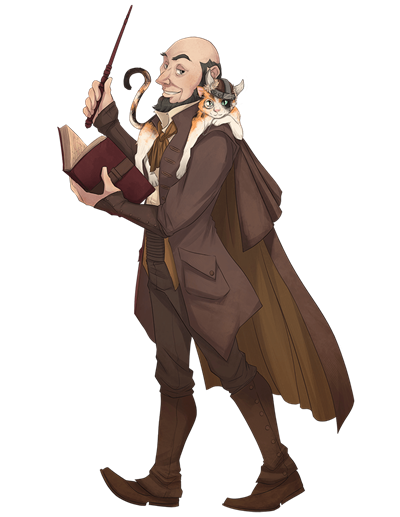 We’ve talked a lot in this series about the nuts and bolts of designing a fun and challenging D&D adventure, and now our time has reached an end… at least for now! In this final installment of “Let’s Design an Adventure,” I want to look at navigating some of the ins and outs of adventure design in terms of putting together a finished product… and making sure you actually get to the end of your writing in the first place!
We’ve talked a lot in this series about the nuts and bolts of designing a fun and challenging D&D adventure, and now our time has reached an end… at least for now! In this final installment of “Let’s Design an Adventure,” I want to look at navigating some of the ins and outs of adventure design in terms of putting together a finished product… and making sure you actually get to the end of your writing in the first place!
As a reminder, my focus in this series has been to look at adventure design through the lens of a very specific end goal: creating a publishable product that can be used by a variety of Dungeon Masters and enjoyed by many kinds of players. Most of the concepts we’ve discussed still apply to DMs who create adventures for their home groups. A few of the topics we’ll cover here apply more to creating a published adventure, but the lessons can carry over to any creator of adventure content.
I hope to cover the following topics briefly but with solid advice. In my time as an RPG freelancer, I’ve written, edited, playtested, and developed adventure content with a wide variety of creators. I’ve tried to engage each of them in conversation, whether in person or remotely, about the process of creation: their frustrations and triumphs, their processes and their peculiarities. The most successful creators seem to have a great deal in common, and even their differences are a testament to the power and complexity of the imaginative process, and to the enduring truths regarding the distillation of creativity into a usable and transferable form.
Audience Determines Format
Back in the pre-Internet days, when AD&D was all the rage, it wasn’t uncommon for campaigns to run the same storyline for the same set of characters for months or years. Long, intense, immersive campaigns seemed to be the norm. Play sessions lasting less than four or five hours were deemed as hardly worth the trouble of getting together.
Undoubtedly such campaigns still exist, and that’s wonderful. However, I’d posit that these long-running, deep-immersion campaigns are now the exception more than the rule. Life—along with our expectations and attention spans—has become a little more fast-paced since those days. We’ve gone, as a collective audience, from “less than four hours isn’t worth the trouble” to “a good hour of D&D is better than no D&D.”
My point? As expectations and audiences for a game change, the design of the game—and its adventures—change as well. My one-hour adventures sell much, much better than my campaign-length adventures. And if people want a complete experience in an hour, and we want those people to be our audience, we have to adjust our creations, and the rules around them, as best we can.
My further point? The concept of “the adventuring day” that has carried over from previous editions is a fast-fading relic. The following comes from Chapter 3 of the fifth edition Dungeon Master’s Guide:
“Assuming typical adventuring conditions and average luck, most adventuring parties can handle about six to eight medium or hard encounters in a day. If the adventure has more easy encounters, the adventurers can get through more. If it has more deadly encounters, they can handle fewer.”
“For each character in the party, use the Adventuring Day XP table to estimate how much XP that character is expected to earn in a day. Add together the values of all party members to get a total for the party’s adventuring day. This provides a rough estimate of the adjusted XP value for encounters the party can handle before the characters will need to take a long rest.”
If a majority of DMs and players want shorter but still complete gaming experiences in their D&D sessions, then the concept of the adventuring day needs to be revisited and adjusted. In fact, the trend of using story-based character progression rather than XP-based leveling in campaigns makes this concept even less useful or necessary in today’s game. There’s nothing wrong if you do play that way. But there are many, many people who don’t. And they need fun adventures too.
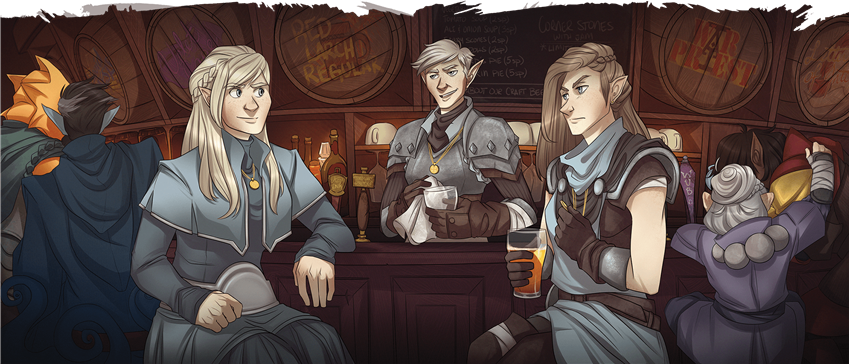
So Know Your Audience
Regardless of how the game is played by a majority, there are, in fact, many audiences out there in the D&D world. Some DMs want intricate, elaborate encounters comprising very complex and nuanced adventures. Some DMs are happy to build adventures using generic, random tables they can use to create everything in their game with a few rolls of the dice. Some DMs want short, linked encounters they can massage to use in their own campaigns. Some want to be given high-level story concepts of a campaign that they can write their own encounters within. All of this is valid adventure design, and all of it can lead to great fun for players.
We, as the adventure writers, need to decide upon which audience our particular adventure is for, and then put our minds and our hearts into delivering them the best we have to offer. My focus in this series has tended toward a more linear adventure design that’s playable in a 4-hour session, because that’s where most of my experience—and most of my audience—has led me. But I’ve also created more “sandbox-style” adventures, longer campaign-length adventures, and very short adventures as well. Those different types of adventures require different design tools.
Are you writing a linear adventure where the story’s beats and plot points are relatively set, and the characters are playing to find out not what happens, but how it happens? Then give the DM strong links between encounters, and make the story you’re facilitating as memorable and creative as possible. Make connections and intricate details that support the linear adventure. Have things that happen in the first encounter of your adventure be important in the last encounter. You’re writing for a DM who wants a tight story, so make it air-tight in the best ways.
Are you writing more of a sandbox-style adventure where the DM and the players are more in charge of creating the story? Then provide the tools that the DM will need to facilitate that experience. For example, provide encounters that are flexible enough to be set in a variety of different locations, but still be memorable. If the evil dragon’s kobold servants are going to ambush the characters, give a less-detailed description that relies on place, and more on the resources that the kobolds have to pull off the ambush. That way whether the ambush takes place in the mountain pass, the city streets, or the abandoned mines, the DM can still use those tools as needed.
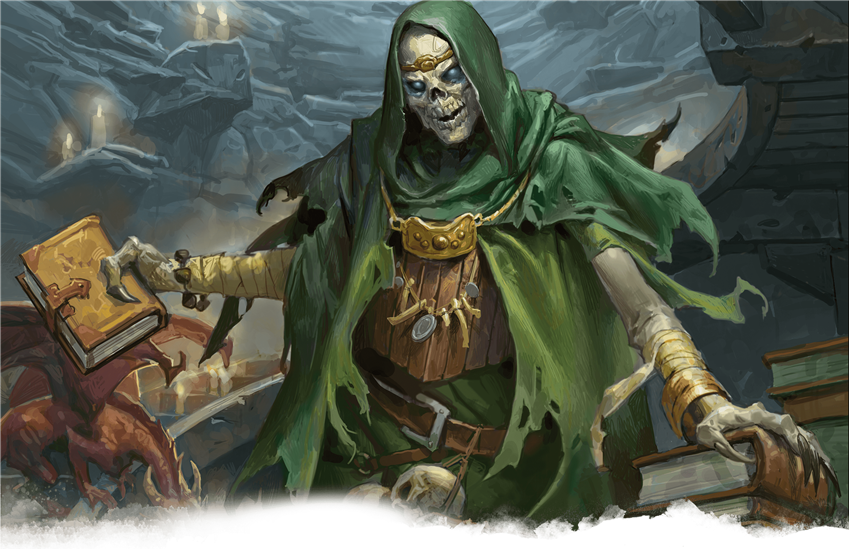
Accessorize
When DMs look for adventure content, presentation often matters. While I’m not a visually oriented person, I can’t deny that I’m in the minority. Adventures that are visually appealing, or have accessories that are visually appealing, tend to attract more attention.
So is the simple rule “the more accessories, the better?” Do a magnificent cover, colorful maps, eye-catching art, stunning handouts, a beautiful layout, and other accessories make an adventure better? Yes.
And no. Accessories are wonderful, but they come with a cost. If you’re blessed with the talent, or if you have taken the time to make yourself adept at creating these accessories, you’re paying a time cost when you make them. If you don’t have the talent or the time, then you’re actually paying someone to do the work for you. And in the low-profit world of RPG design, you may be paying more for the accessories than you can ever hope to earn. That doesn’t mean, however, that these aren’t important to discuss.
Maps
Maps are probably the most important accessory for your adventure—so important, in fact, that many people would argue that they are not an accessory, but a necessity. Maps, if done well, might even save you time and effort in writing because, as the old saying attests, the picture might be worth a thousand words (though I find the actual number tends to only be a few hundred). A map might depict a campaign-size adventuring area like the entire Sword Coast, they might be tactical maps showing an encounter area, or they might be anything in-between.
Whether you’re going to include attractive maps or not, mapping your adventure is something you should do during design. There’s no better way to figure out that you just put 10 Large-sized enemies in a room that wouldn’t fit half of them than actually drawing it to scale on a simple piece of graph paper. This exercise also engages a different part of your creative process, and doing that is important in creating the best results in your work.
If you can’t draw a straight line even using a ruler (like me), there are options out there. For example, Dyson Logos offers nicely drawn maps for use under a free commercial license. In other words, you can use those particular maps royalty-free as long as you attribute them. (See his copyright notice for the brass-tacks policy information—something all publishers should learn to read carefully.) Other inexpensive or free options are available as well.
Cover
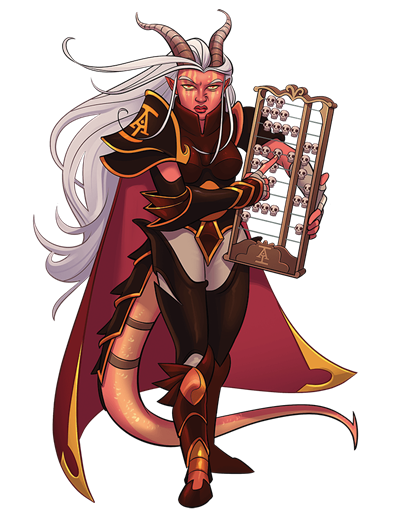 If selling your adventure is a priority, then the cover is an incredibly important accessory, especially in terms of art and layout. In virtual markets like the DMs Guild, the cover might be the only part of your adventure a potential buyer sees before making a purchase decision. While the art and layout are important, the text can be equally important. Is it clear what your product is? Who it’s for? What it offers? Hone those marketing skills and test your product’s cover appeal on friends and family. See if they’re intrigued by it, while at the same time having all the information they need to know what it is.
If selling your adventure is a priority, then the cover is an incredibly important accessory, especially in terms of art and layout. In virtual markets like the DMs Guild, the cover might be the only part of your adventure a potential buyer sees before making a purchase decision. While the art and layout are important, the text can be equally important. Is it clear what your product is? Who it’s for? What it offers? Hone those marketing skills and test your product’s cover appeal on friends and family. See if they’re intrigued by it, while at the same time having all the information they need to know what it is.
Internal Art
Internal art is a great tool for illustrating key points or moments in your adventure, and they also assist in the layout of your work, when an awkward blank space would otherwise appear. If you publish on the DMs Guild, Wizards of the Coast has provided free art for your use in Guild products. Many other no- or low-cost options are available around the internet.
If you are going to solicit custom art, be ready and willing to do some additional writing. My very first full-length adventure project for Wizards of the Coast was a fourth edition adventure called Assault on Nightwyrm Fortress. After turning over the text, I was asked to write some “art orders.” I had no idea what an art order was or how to do it. Even though I’ve done many since, it always feels like the first time.
Remember the “a picture is worth a thousand words” adage I mentioned earlier? Well, an art order is like a thousand words delivered to help make a picture. When I first had to write them, they felt like a chore. The more I did them, however, the more I appreciated how they, like maps, were valuable even if they were not something that went into a finished product. Taking the time to fully visualize something, like an important NPC, engaged a different part of my brain. Imagining their expressions, their clothing, their stances, or other aspects helped better solidify them as fully formed entities within adventures.
Layout
Layout is as much about usability as it is aesthetics. Templates are available online that provide you the means to lay out your own content in everything from MS Word to InDesign. Hiring a professional designer costs you, but the professional look and extra attention they bring often justifies a higher price point for your product. Unlike accessories, which can easily become expensive indulgences, layout is almost always worth the cost.
In the end, though, make sure the layout you employ serves the DM who will be running your content. How much flipping between pages will they be forced to do? Is the information too densely packed? Use headers and subheaders to call out breaks in information. Use bullet points and formatting to draw the DM’s eye to the right information at the right time. If you have interior art, make sure it supports the words on the page rather than detracts from it.
Editing and Playtesting
Editors are amazing people. All writers should have best friends who are editors. No, not to get free work out of them! Editors’ skill as proofreaders is amazing enough, but it’s how they can precisely dissect a problem and offer a solution that is their most valuable contribution. As with artists, their services might be expensive, but for a professional designer they’re worth it.
Even if you cannot afford a top-notch editor, at least find someone who can spot the most egregious errors and typos in your work. This might involve trading such services with one of your peers, but spotting and fixing blatant errors can save you from some embarrassing problems in publication.
I equate playtesting with editing when it comes to adventure design. A proofreader might spot typos or grammar problems, but a good playtest group can delve deep into the dark recesses of your adventure and shine lights on gruesome play issues that you couldn’t imagine while you wrote. Running a playtest of your own stuff is helpful—having someone else run a playtest of your stuff is better. As long as they are honest and adept at noting the minutiae that needs to be addressed, a good playtest group increases the quality of an adventure in immeasurable ways.

Writing Habits (Good or Otherwise)
Apart from the final published content of the adventure, the other aspect of “professional” design I wanted to talk about is writing habits. For 18 years I was a part-time freelancer, working projects around a full-time career, family, teaching gigs, and other pursuits. When I had the time to work on my freelance projects, I was all business. I could push out 10,000 decent words in a weekend day. I could spend four hours at night editing many, many pages in one sitting, and somehow remain laser focused.
When I made the move to being a full-time designer 2 years ago, I was giddy at the amount of content I imagined I could write and edit. As I took on projects, I found I was only writing 10,000 decent words in a week (if that!), despite spending 5 times longer sitting at the keyboard that before. I was by turns guilty at the apparent lack of word count and petrified with fear that some sort of creative well inside me had gone dry.
Look back, what happened was pretty simple: my schedule was changing drastically, but I wasn’t adjusting my writing habits to match. What had before been “this is my dedicated writing time” became “I can do this whenever I want.” As it turns out, I couldn’t do it whenever I wanted. I’ve spent the last two years attempting to adjust both my habits and my schedule to accommodate my particular process.
One thing I cannot do is tell you the correct process for you, because everyone’s is different. Some people’s process is forced upon them by schedules and situations. Some people have the luxury to write only when inspiration strikes. Others have to take inspiration by the throat and make it behave. Finding your best process takes experimentation, training, and self-examination that can be uncomfortable. There are three things I have found that work for many people, however, when they are having trouble with a project.
- Writing begets writing. If you’re staring at the page and nothing is coming, open a new file and just start typing. (Or grab a blank sheet of paper and start writing if you work longhand.) Type a letter to a friend or family member. Type instructions for baking your favorite dessert. Type a poem full of nonsense words. Just type something. The physical act of doing the thing will put you in the best place to do the thing. Then when you’re in a groove, switch back to the original project and see what happens.
- Focus on a different task within the project. If you’re writing an adventure, you’re doing more than just writing. You’re thinking about monsters, or maybe creating your own. You’re calculating the difficulty of combats. You’re creating NPCs. You’re drawing maps. You’re writing art orders. Being able to turn your attention toward a different sort of activity, such as the spatial projection of mapping versus the linguistic process of writing, can allow one part of your brain to percolate while another works.
- Soak up inspiration elsewhere. It’s a rare person who can create and create and create without the need to “refuel” that creative energy. Ingesting and processing different stimuli can be a great way to draw inspiration. Something as simple as reading a different adventure might be just the jolt you need. But moving toward a different medium can be just as helpful. Taking 20 minutes to close your eyes and listen to music, especially something you don’t know note for note already, can be a quick fix. Personally, for me, taking in something new is more helpful than something old and familiar, but everyone is different.
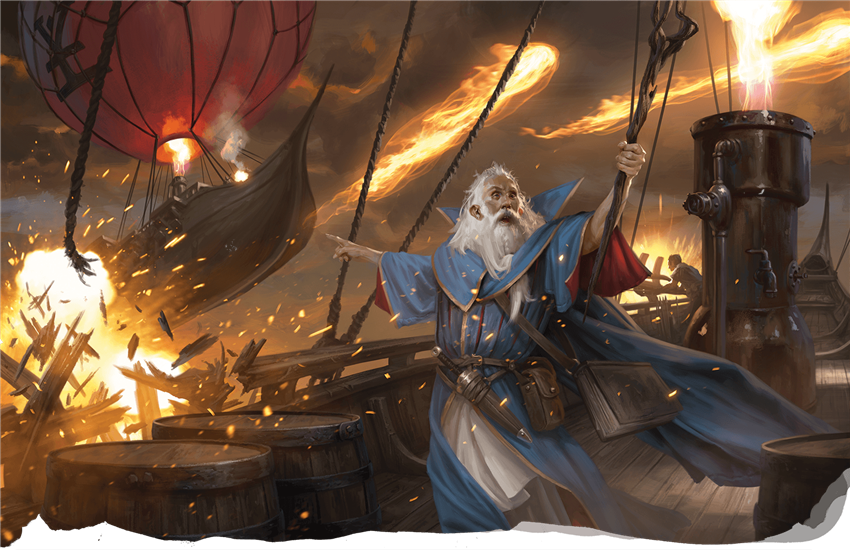
What’s Next?
At the start of this series a few months ago, I promised an adventure at the end of it. Because of my verbosity, I was unable to deliver. I’m interested to know if you’re still interested in that promised adventure.
(As am I! I’d love to bring Shawn back, if you want to see these principles put into action!)
—James Haeck, editor
Thanks to everyone who’s read these articles and taken the time to comment. And I look forward to reading and playing your adventures in the future!
Create A Brand-New Adventurer Acquire New Powers and Adventures Browse All Your D&D Content
 Shawn Merwin's professional design, development, and editing work in D&D has spanned 20 years and over 4 million words of content, ranging from third to fifth edition. His most recent credits include the Acquisitions Incorporated book, Baldur’s Gate: Descent into Avernus, and Storm Lord’s Wrath. He is also the Resource Manager for the D&D Adventurers League’s Eberron: Oracle of War campaign. Shawn hosts a weekly D&D podcast called Down with D&D, and he holds an MFA in Creative Writing from Vermont College of Fine Arts. You can follow his ramblings and musing on Twitter at @shawnmerwin.
Shawn Merwin's professional design, development, and editing work in D&D has spanned 20 years and over 4 million words of content, ranging from third to fifth edition. His most recent credits include the Acquisitions Incorporated book, Baldur’s Gate: Descent into Avernus, and Storm Lord’s Wrath. He is also the Resource Manager for the D&D Adventurers League’s Eberron: Oracle of War campaign. Shawn hosts a weekly D&D podcast called Down with D&D, and he holds an MFA in Creative Writing from Vermont College of Fine Arts. You can follow his ramblings and musing on Twitter at @shawnmerwin.
Want to read more of this series? Click on the "Let's Design an Adventure!" tag to see the full series.








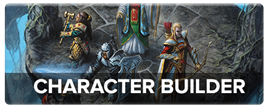
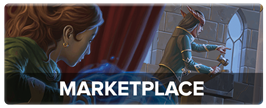
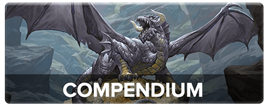
-
View User Profile
-
Send Message
Posted Mar 25, 2020Yes, please, on the adventure!
I’ve really enjoyed this series; it has given me a lot to think about as a DM and as a writer. Thank you!
-
View User Profile
-
Send Message
Posted Mar 25, 2020I would definitely enjoy seeing everything you've presented in these articles come together in an adventure of some sort. Or at least another article that's like a summary or walkthrough of everything.
Like you said, it's been a months long series, and you really gave us a lot a massive amount of guidance and information. I'd love to see the final conclusion you deserve to present as a culmination of your lessons.
-
View User Profile
-
Send Message
Posted Mar 25, 2020This.
I think it would be great to see all the excellent advice put into actual practice.
-
View User Profile
-
Send Message
Posted Mar 25, 2020Pleas give us an adventure!! I would love that
-
View User Profile
-
Send Message
Posted Mar 25, 2020I would love to see an adventure that puts all these principals in action, or at least a gigantic summary article.
-
View User Profile
-
Send Message
Posted Mar 25, 2020As a first time DM who is writing their own adventures, this series has been really helpful. An example adventure would be really great! Like others have said, it would be a helpful way to wrap up this series. Thank you!
-
View User Profile
-
Send Message
Posted Mar 25, 2020Yes! I would love and adventure, and so would my players!
-
View User Profile
-
Send Message
Posted Mar 25, 2020Adventure Please.
-
View User Profile
-
Send Message
Posted Mar 25, 2020Yes, I'm interested in a adventure from you.
-
View User Profile
-
Send Message
Posted Mar 25, 2020I DO want to see these principals put into action!
You can't end things now, it'd be like missing the end of a movie. :)
Please, write the adventure!
-
View User Profile
-
Send Message
Posted Mar 25, 2020YES! YES I AM!!!
-
View User Profile
-
Send Message
Posted Mar 26, 2020I would love to see an adventure, especially with an annotated version including notes by Shawn on why he did which parts, with references back to these articles. For example, a note on a combat encounter explaining how it's both a combat and a social encounter, or how he sets up a problem for players to solve that he intentionally gives a combat OR exploration OR social way of solving. Or notes on why he wrote front material the way he did. Or things like that. The notes would be very, very helpful.
-
View User Profile
-
Send Message
Posted Mar 26, 2020Yes, please!
-
View User Profile
-
Send Message
Posted Mar 26, 2020Great writeup!
Note that only some of his maps are under a free commercial license. The rest are available under "a non-exclusive, non-commercial license to use [his] maps in a manner that does not support your other commercial endeavours".
On the topic of editing:
Do you know anything about or have any advice for doing editing in a professional/paid capacity, and how to get involved in doing so? I think I'd be an excellent editor, but I'm not sure how to really get involved in that without, for instance, having a friend who intends to publish their thing on DMsGuild (or elsewhere).
-
View User Profile
-
Send Message
Posted Mar 26, 2020Yes on the adventure please.
-
View User Profile
-
Send Message
Posted Mar 26, 2020My favorite D&D Beyond series of articles to date. Thank you, Shawn.
-
View User Profile
-
Send Message
Posted Mar 26, 2020YES
-
View User Profile
-
Send Message
Posted Mar 26, 2020This series is really helpful! I've been using it in the planning process of my second homebrew adventure. Using this, along with the results of surveying the party, I'm hoping to make an even better adventure than the first one I ran (also homebrew), which is a tall order because I got very good ratings for it.
-
View User Profile
-
Send Message
Posted Mar 26, 2020Dear Shawn, thank you for these articles, they were/are my favorite to read every week. I would love to see the adventure you created in this series come to live. I would love it even more, if we could get it here on DnD Beyond. Everything you described until now sounds awesome and the look behind the pages (so to speak) is fascinating.
So thank you and I hope, we can continue our adventure together.
-
View User Profile
-
Send Message
Posted Mar 26, 2020Yes - bring on the adventure! And thanks for these articles - these have been great!